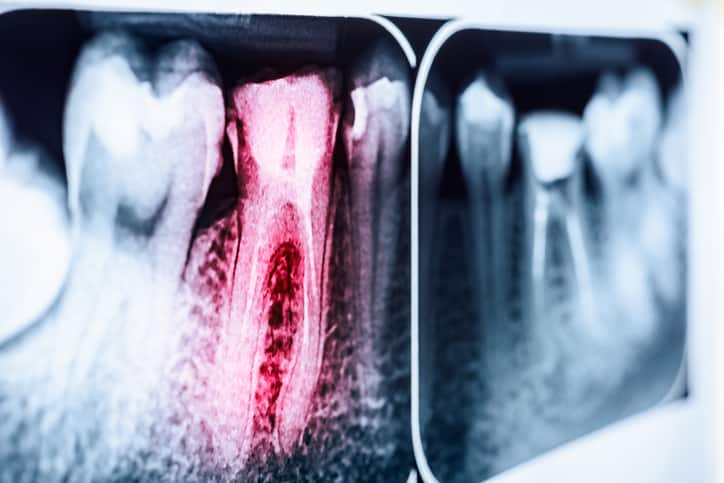Cavities are a very common problem in both adults and children, and many people will have at least one in their lifetime. There are a number of myths and misconceptions around cavities that we see in our work, and in this blog, we’re going to debunk the most common of them.
What is a cavity?
A cavity is a permanently damaged area of your tooth that creates tiny openings for bacteria. This occurs when our enamel is worn down by factors such as insufficient oral health habits, a diet high in acidic or sugary food and beverages, trauma from injury or bruxism, or as a side effect of certain medications. The best way to mitigate the effects of a cavity is to regularly visit your dentist, who can protect your teeth from further damage with interventions such as fillings, crowns, or root canals.

5 common myths about cavities.
- Cavities only occur in childhood.
This is a common belief that we encounter when we have adults with cavities. The reality is, more cavities occur in adulthood than in childhood. This occurs for a number of reasons, but the top one is the irregularity of dental visits in adulthood. As adults, we often neglect to visit our dentist which leads to compounding dental health issues. It is imperative that you visit your dentist every 6 months to 1 year to prevent serious dental health outcomes. - A filling will fix it.
When you have a cavity, your dentist will remove the decaying dentin and replace it with a strong medium, such as amalgam or zirconia, to prevent further decay. This isn’t the end of the story, though. A filling will not protect your tooth from further damage in another area –– the underlying oral care routine is the best way to prevent further cavities. If your oral care habits are lacking, check out our other blogs to learn more about good home-care techniques, and see your dentist consistently –– we are always here to answer your questions. - If your teeth are sensitive, you have a cavity.
While tooth sensitivity can indicate a cavity is developing, it is not always the case. Tooth sensitivity can also indicate conditions such as bruxism, receding gums, and injury to the teeth. Only your dentist can diagnose and recommend treatment for these conditions, which is why it is so important to visit your dentist regularly. - Gaps in teeth are a risk factor for tooth decay.
Gaps in the teeth can be a factor for increased risk of injury, but it is actually crowded teeth that pose the greatest risk for tooth decay! Crowded teeth and misaligned bite are the biggest areas of concern for dentists as they make proper cleaning more difficult. However, if you have large gaps in your teeth, you can talk to your dentist about trying Invisalign to bring your teeth into better alignment. - Sugar is the cause of cavities.
Sugar plays a critical role in the development of cavities, but so do many other lifestyle and diet choices including acidic beverages, carbs, and prescription medication. The main culprit of dental cavities is plaque –– a sticky microbial coating on the teeth that can harden into tartar. The best way to care for your teeth is to brush twice daily for at least 2 minutes and floss daily.
Saskatoon, your dentist can help you prevent tooth decay!
The best way to keep a healthy mouth is to visit your dentist! The number one factor in many serious dental problems is the avoidance of dental care. Cavities that are caught early require only mild intervention, but cavities that are allowed to continue unchecked can lead to serious oral health concerns such as abscesses, infection, and tooth loss. Talk to your dentist at Acadia today by scheduling your cleaning and check-up.





